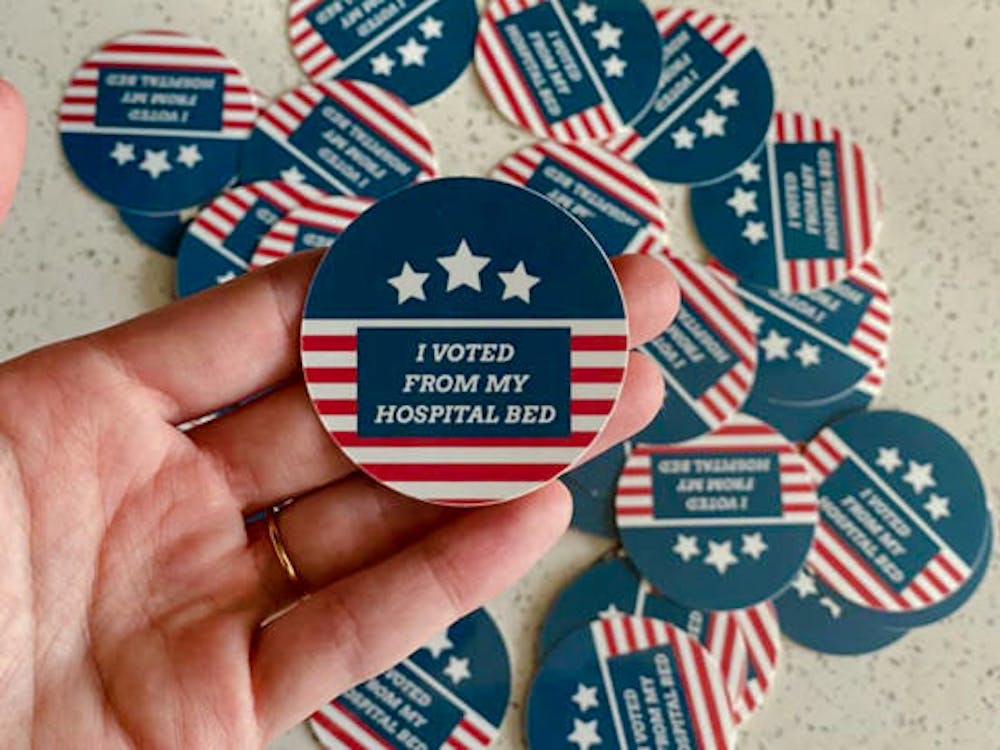Patient Voting, a nonpartisan civic engagement organization, has worked to reduce barriers to voting for hospitalized patients by increasing awareness and access to voting information.
During the 2016 election, Kelly Wong, now a fourth-year resident in emergency medicine at the Alpert Medical School, saw many patients resisting admittance to hospitals because they wanted to vote. So she founded Patient Voting in 2018, which is funded by a grant from the Med School’s Department of Emergency Medicine, to ensure that patients do not have to make a trade-off between their health and their right to vote.
Wong had heard patients say, “‘I don’t care that I’m having a massive heart attack or I have pneumonia … I’ll come back after I vote, but I have to go vote.’” These patients did not know there was a process in which they could vote without ever having to leave the hospital.
In the 2020 election, at least 38 states had Emergency Absentee Ballots that patients could request and five had primarily vote-by-mail systems, said Oliver Tang ’19 MD’23, Patient Voting liaison to state election boards.
Despite the existence of systems that allow hospitalized Americans to vote, the majority of states don’t have clear information about emergency absentee voting on their websites, Tang said.
To gather information about patient voting in some states, Tang had to go through “obscure” forms, such as election manuals and state charters. “I can’t imagine a patient who’s navigating dozens of other things at the moment … having to go through that,” Tang said.
Some of the patient voting information on state websites does not even match up with forms, which adds to the confusion, Wong added.
Patient Voting has made this information clearer and more accessible by compiling instructions for how patients can vote in each of the 50 states, Tang said. For example, for states that have an Emergency Absentee Ballot system, the Patient Voting website lists relevant deadlines, step-by-step instructions and copies of forms a patient needs to complete.
Patient Voting also has on-the-ground volunteers who distribute materials on how patients can vote, print out necessary forms and, in some cases, deliver ballots and applications to state election offices. In some hospitals, such as Rhode Island Hospital, Patient Voting has been incorporated on an institutional level, Wong said. Rhode Island Hospital patients and staff were informed of the program prior to the election, and the hospital had information from Patient Voting specific to states home to the majority of their patients, she added.
If a patient is located in an area where there are no volunteers, the organization fields emails 24/7 and also has email templates that patients can use to request help with ballots from their hospitals, said Katherine Barry ’19 MD’23, a national medical school coordinator and protocol creator for Patient Voting.
“We’re not creating any process that didn’t already exist. Every state has this, but few people know about it,” Barry said. “We’re kind of doing a lot of the groundwork in making it easy for people” to vote.
The day before the 2020 election, the website had around 2,500 views, Wong said. They had also been fielding an increasing number of emails in the days leading up to Election Day.
Both Tang and Wong estimated that around half of all the inquiries they had received leading up to the presidential election were due to people being hospitalized for COVID-19.
COVID-19 “has really proven that anybody could be unexpectedly hospitalized, anybody could end up in the ICU,” prompting even healthy people to think proactively about less traditional ways to cast their vote in the event that they became ill, Wong said.
Patient Voting currently has students distributing materials in 25 medical schools, which Barry said was made possible by the commitment so many people involved in medicine have to the non-physical aspects of health care.
“In this new generation of medical students, our education is about a lot more than the basic science of medicine. There is a lot of emphasis on addressing social factors that influence health, and one of those determinants is civic engagement and being able to have your voice heard in democracy,” said Barry.
Moving forward, Wong hopes to make Patient Voting a part of a larger institution, such as a school of public health. The members are also considering creating report cards that evaluate the patient voting information a state provides, Wong added.
In future elections, Tang would also like to implement means for overcoming barriers, such as for patients who are physically unable to fill out forms.
Providing voting information is “one way outside of a patient’s medical care that, as their doctors and as health care workers, we can help improve their health,” Barry said. “We can empower people who otherwise wouldn’t have their voices heard to vote for whatever is important to them, for whatever they think is going to make their communities healthier and safer.”

ADVERTISEMENT




